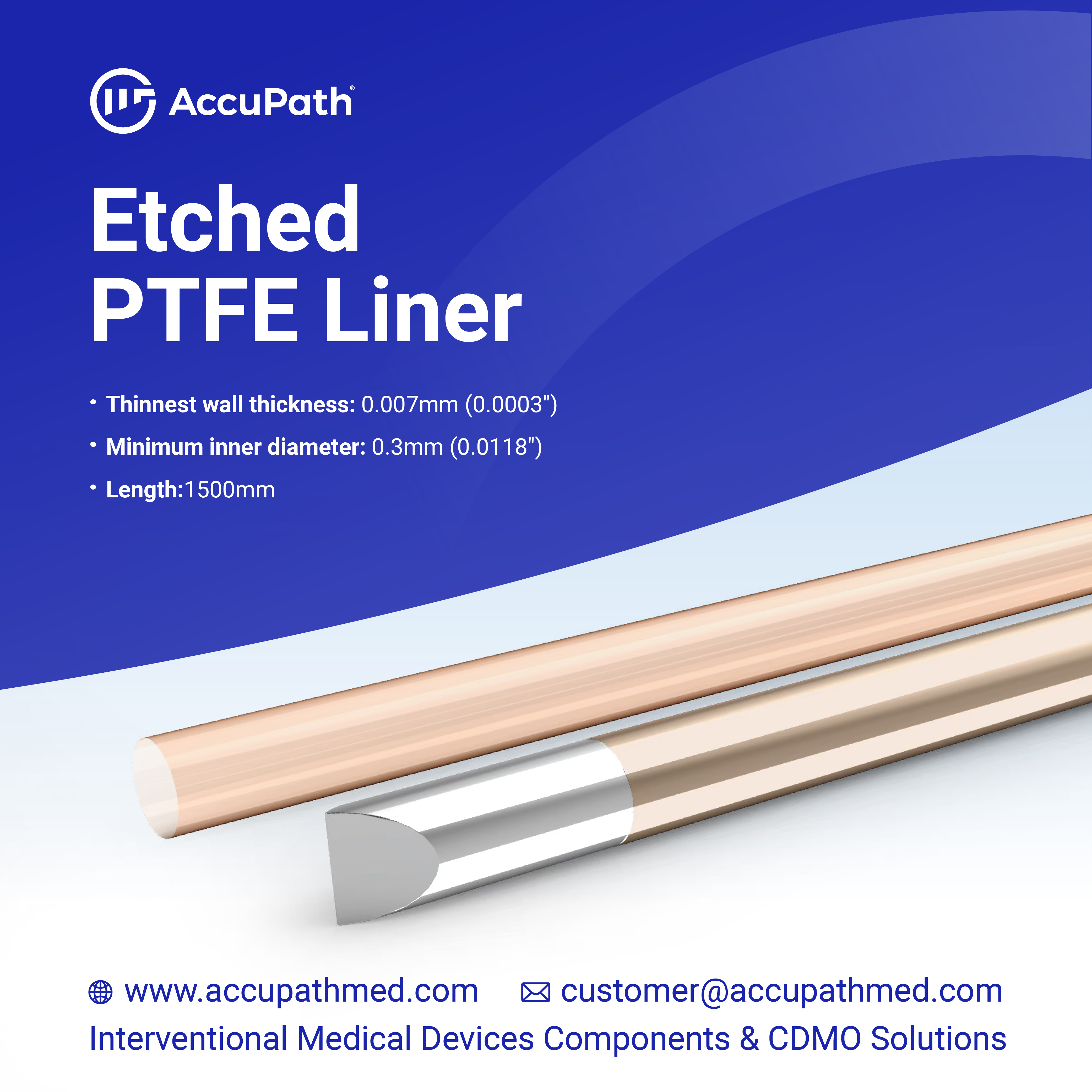Top 3 Reasons Etched PTFE Beats Other Catheter Materials

Medical advancements demand materials that deliver reliability and efficiency. Etched PTFE for Catheter Manufacturing stands out as a game-changer in this field. Its unique properties make it the preferred choice for creating high-performance catheters. This material resists chemical degradation, ensures strong adhesion, and maintains structural integrity under stress. These qualities enhance its functionality in critical medical applications. By addressing durability and cost concerns, etched PTFE redefines standards in catheter production, offering unmatched value to manufacturers and healthcare providers.
Key Takeaways
Etched PTFE offers exceptional chemical resistance, ensuring catheters maintain their integrity even in harsh environments, enhancing patient safety.
The etching process improves adhesion properties, allowing for stronger bonding with other materials, which simplifies assembly and reduces defects.
Etched PTFE's thermal stability allows it to perform reliably across a wide temperature range, making it suitable for various medical applications.
The durability of etched PTFE leads to reduced maintenance and replacement costs, providing significant long-term savings for healthcare providers.
Superior Performance of Etched PTFE for Catheter Manufacturing
Exceptional Chemical Resistance
Etched PTFE demonstrates remarkable chemical resistance, making it a standout material in catheter manufacturing. Etched PTFE resists chemical breakdown, even when exposed to corrosive agents or prolonged contact with bodily fluids. This resilience ensures that catheters maintain their functionality and reliability in demanding medical applications.
Maintaining catheter integrity during extended use is critical in healthcare settings. Etched PTFE excels in this area by offering long-term stability. Its ability to withstand chemical exposure reduces the risk of material failure, which enhances patient safety. Medical professionals rely on this durability to ensure consistent performance, especially in procedures requiring prolonged catheter use. This reliability positions etched PTFE as a superior choice for challenging environments.
Enhanced Adhesion Properties
The etching process significantly improves the adhesion properties of PTFE. By modifying the surface, the process creates a texture that allows stronger bonding with other materials. This feature is essential in catheter manufacturing, where components must adhere securely to ensure proper functionality. Etched PTFE provides a reliable foundation for creating durable and high-performance medical devices.
Polyurethane, another material used in catheter production, often faces adhesion challenges. Its smooth surface makes bonding difficult, leading to potential failures during use. Etched PTFE overcomes these limitations by offering enhanced adhesion capabilities. Manufacturers benefit from this improvement, as it simplifies assembly processes and reduces the likelihood of defects. The result is a more efficient production cycle and a higher-quality end product.
Unmatched Durability of Etched PTFE for Catheter Manufacturing
Thermal Stability
Etched PTFE withstands extreme temperatures better than most other materials used in catheter manufacturing. Silicone and polyurethane, for instance, often degrade when exposed to high or low temperatures. These materials may lose their flexibility or become brittle, compromising their functionality. Etched PTFE remains stable across a wide temperature range, ensuring consistent performance in various conditions.
Certain medical applications demand materials with high thermal stability. Procedures involving sterilization or exposure to fluctuating temperatures rely on catheters that can endure these challenges. Etched PTFE meets these requirements by maintaining its properties under thermal stress. This stability not only extends the lifespan of the catheter but also ensures its reliability during critical medical interventions. Manufacturers value this feature, as it enhances the overall quality of their products.
Cost-Effectiveness of Etched PTFE for Catheter Manufacturing
Reduced Maintenance and Replacement Costs
Etched PTFE offers significant cost advantages by reducing maintenance and replacement expenses. Its durability ensures that catheters last longer, even under demanding conditions. Unlike materials that degrade quickly, such as silicone or polyurethane, etched PTFE maintains its structural integrity over extended periods. This longevity minimizes the need for frequent replacements, saving both time and resources for healthcare providers.
Lifecycle costs play a critical role in material selection for catheter manufacturing. Silicone and polyurethane often require more frequent replacements due to wear and tear. These recurring costs can strain budgets, especially in high-demand medical environments. Etched PTFE, with its superior durability, provides a cost-effective alternative. Its ability to withstand mechanical stress and chemical exposure reduces the overall expenses associated with catheter maintenance. Manufacturers and healthcare facilities benefit from these long-term savings, making etched PTFE a practical choice.
Streamlined Manufacturing Processes
Etched PTFE simplifies production processes, offering another layer of cost-effectiveness. The etching process enhances the material's adhesion properties, which facilitates easier bonding with other components. This improvement reduces the complexity of assembly, allowing manufacturers to streamline their workflows. Simplified production leads to faster turnaround times and fewer errors, which ultimately lowers manufacturing costs.
Scaling production in the medical industry requires materials that support efficiency. Etched PTFE meets this demand by enabling consistent and reliable manufacturing outcomes. Its compatibility with automated processes further enhances scalability, making it ideal for large-scale catheter production. Manufacturers can produce high-quality catheters at a lower cost, ensuring that they meet market demands without compromising on quality. This efficiency positions etched PTFE as a valuable asset in the competitive medical device industry.
Etched PTFE delivers unmatched benefits for catheter manufacturing. Its superior performance ensures chemical resistance and reliable adhesion. Its durability withstands wear, tear, and extreme temperatures. Its cost-effectiveness reduces maintenance expenses and streamlines production. These qualities make it the ideal material for medical applications. Manufacturers and healthcare providers can rely on its consistent quality and long-term value. Choosing etched PTFE supports innovation in medical device production. It sets a new standard for efficiency and reliability in the industry.
See Also
The Importance of PTFE Etched Liners in Catheters

